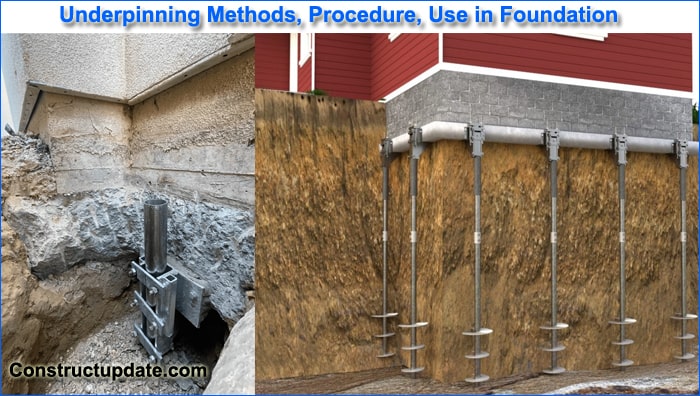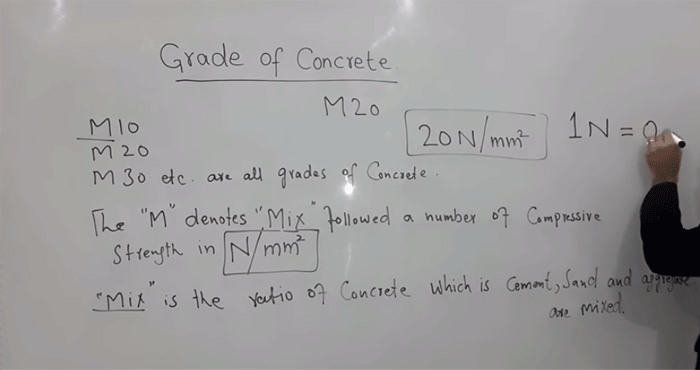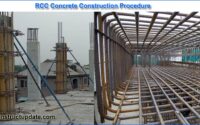Underpinning Methods, Uses, and Procedures in Foundation Strengthening
A delicate building technique called underpinning can be used to reinforce an existing foundation or to bury a new foundation deeper beneath an old one.
This underpinning procedure involves adding reinforcement to an existing foundation in depth or over its breadth.
So that it is dispersing the load over a larger region of surrounding soil and resting on highly supportive soil strata.
For underpinning, the micro pilling and jet grouting methods are frequently utilised, however they are extensive and complex.
Underpinning is a delicate repair project, so we must select the best approach. Understanding and evaluating the soil strata, the current status, any issues affecting the entire foundation, the necessary depth, and the scope of the new foundation are all necessary for the suitable procedure.

When do we need underpinning?
When the original foundation is inadequate to support the structure, most homeowners must underpin their homes. Usually as a result of:
The soil that supports the foundation has changed in some way, such as through subsidence, moisture-induced expansion or contraction, nearby huge trees, or piping that has been broken but not fixed.
The foundation was not designed with sufficient consideration for the characteristics of the soil, so it is insufficient under the circumstances.
Underpinning is also necessary for less frequent situations for the following reasons:
- The structure’s usage has changed, for example, as a result of a significant refurbishment.
- Excavation of earth supporting existing foundations caused by adjoining new building
to strengthen the strength of the building’s current foundations so they can hold an additional level - Natural catastrophes have caused the structure to move or become unstable, such as earthquakes, floods, or droughts.
Underpinning Methods:
The many underpinning techniques used to strengthen foundations are as follows:
- Mass Concrete Underpinning Methods (PIT method)
- Cantilever-Supported Needle Beam Technique
- The technique of pier and beam underpinning
- Little piles of underpinning
- Pile underpinning technique
- Pre-test underpinning technique
Whatever the sort of underpinning technique chosen for reinforcing the foundation, they all share the common goal of lengthening or widening the current foundation and laying it over a stronger soil layer.
This makes it possible to spread the weight across a bigger region. The following sections provide a quick overview of several underpinning techniques. The ground conditions and necessary foundation depth determine the method to use.
1. Mass Concrete Underpinning Methods (PIT method)
The entire length of the foundation is divided into manageable portions using the pit method, each measuring between 1.2 and 1.5 metres in length. For safety reasons, only one part is taken into account for underpinning at a time.
To begin, basic intervals of holes are cut in the ground-level divider, and solid needles are then inserted through the openings to transport the entire structure’s weight. The needles are often constructed from steel joists or wood beams.
To support the brickwork above the needle, bearing plates are positioned above it. Crib supports, or wooden blocks, are used to support the needle together with screw jacks on either side of the wall.
To support the brickwork above the needle, bearing plates are placed on top of it. Crib underpinnings (wooden squares) are used on either side of the division as the needle’s supporting framework, together with screw jacks.
2. Cantilever-Supported Needle Beam Technique
The cantilever needle beam method, an extension of the pit method, shows how the cantilever pit underpinning is arranged. This technique is especially helpful for underpinning when only one side of the foundation needs to be enlarged and the plan has a stronger internal column.
3. Pier and Beam Underpinning Method
The base and beam method commonly referred to as the pier and beam method, was put into use in 1946. Due to the mass concrete method’s inability to function effectively for a substantial depth of foundation, this approach is commonly recognised.
The majority of ground conditions can be handled by this technique. As seen in the figure above, reinforced concrete beams are positioned here to transfer the load to mass concrete bases or piers.
The ground conditions and applied loads determine the size and depth of the beams. For depths shallower than 6 metres, it is considered cost-effective.
4. Mini Piled Underpinning
Where loads from the footing transferred the strata located more than 5 metres away, mini-piled underpinning was used. This method is ideal for soil with a variety of natural features, which also has very limited access and causes contamination.
5. Pile Method
This method involves driving piles on the opposite sides of the wall supporting the shaky base. The wall, which is attached to the piles, is punctured with a needle. They function as pile caps. This approach can be used to remediate settlement in soil caused by water blockage or clayey nature.
5. Pre-test Method of Underpinning
For a strip or pad foundation, it is used. can be applied to structures with five to ten stories. Here, in the new excavation level that applies predefined loads to the earth, the subsoil is squeezed and rendered compact. This is completed before underpinning. Here, less commotion and loudness are anticipated. For raft foundations, this method is not workable.





